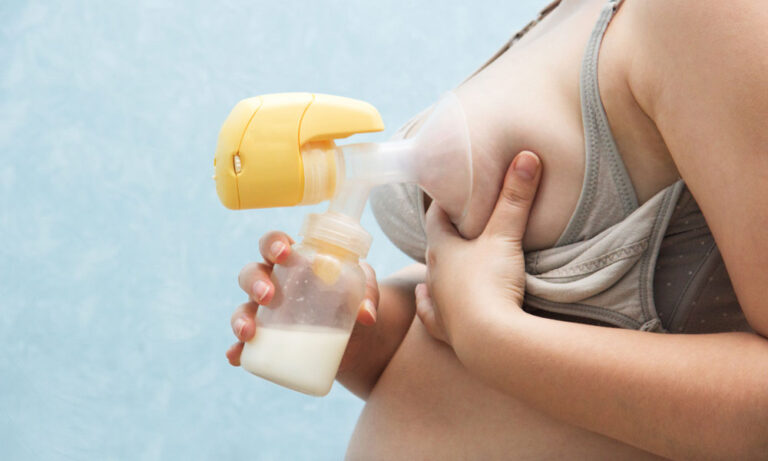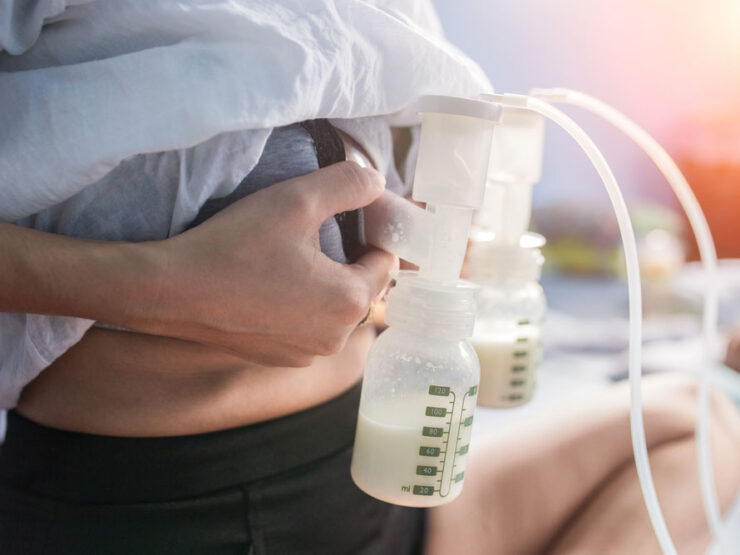When pumping breastmilk, it’s normal for mothers to wonder and worry about the amount of milk they are letting out. After all, you will want to make sure that you provide enough food and nutrients your baby needs for him to grow healthy and strong.
Plus, it helps you get an accurate measurement and know what you should do to either produce less or more milk.
So you’re probably pondering on the question: “How much milk should I be pumping?”
If you’d like to know more about the amount of milk you should be pumping and how to continue to produce milk normally, then read on as I talk about your breastmilk production and what to expect.
How Much Milk Should I Be Pumping?
So how much milk should mothers expect to pump? This will depend on many factors!
Many new moms will need to start pumping milk at one point, may it be exclusively or during uncomfortable times you are producing more milk even after breastfeeding. Either way, it can be quite different from breastfeeding, and you are wondering if it would be similar to the baby.
During the first few weeks of breastfeeding, you will be pumping milk less than what you expect. It will be about an ounce after your baby is born, though it will then start going up to about 30 ounces after a month and a half. But you should also expect it to go down or fluctuate after that.
But for pumping, expect it to take some time and practice for your body to be trained and respond to the pumping the way it does when breastfeeding. While you may pump in small amounts at first, it will then increase as time goes on. As long as you pump milk correctly, of course.
And like mentioned, the amount of milk you pump will depend on various factors, such as:
Baby’s Age
The amount of milk your baby needs depends on his age and weight. That is why you will only pump a small amount of milk at first, which gradually increases as your baby’s appetite begins to grow. Like what I said, expect an average of 30 ounces per day once your baby has reached four to five weeks old, keeping it steady from there.
Breastfeeding Exclusively
If your baby is also taking in other forms of liquid and solid food, then you should expect to produce less milk as you aren’t feeding your little one breastmilk as much, compared to those who are taking in breastmilk exclusively.
Time After Your Last Pump
If you are pumping between regular breastfeeding sessions, you will be pumping about two ounces of milk or half a feeding. You pump out a while feeding (four ounces) if you pump after a missed feeding. If you are exclusively pumping and feed your baby solely breastmilk, expect to pump a full feeding when pumping.
When You Are Pumping
If you are pumping at different times of the day and feel like you aren’t producing enough at night, then don’t worry. Milk production varies throughout the day, with it being more in the morning and slower come afternoon and night.
How You Feel
If you feel any negativity, then you should expect to pump less milk than usual, as the adrenaline would stop your milk flow. For those who are happier and calm, you will be able to pump the normal two to four ounces.
Type of Pump You Have
If you don’t have a quality pump, then it won’t perform as it should, resulting in you not being able to catch or pump as much milk as expected. The pump you have should have the optimum fit, with the right size for your nipple and not your breast. It should be comfortable and known to be efficient in pumping milk without the pain or hassle.
How to Pump More Breastmilk
If you feel like you aren’t producing as much breastmilk as you should for your little one and don’t pump enough (as suggested by the information on the previous section), then what are ways you can help encourage milk production? Here are some tips to follow:
- Pump for two hours a day, divided into various sessions. I would recommend that you pump eight times a day for 15 minutes each. But that varies depending on what you prefer and how your breasts produce milk.
- Pumping milk may be difficult at first, but you can make it more manageable through setting a routine and investing in extra pump parts that encourage your milk flow.
- When pumping your milk, make sure that you wash and disinfect the pump and your hands before doing so to avoid contamination.
- The nipple must be in the center of the flange opening to ensure optimum milk flow and a successful pumping session.
- Start pumping at high speed with a low suction. Once you start seeing the milk flow, lessen the speed to medium and increase the speed as needed.
- The type of pump you invest in would also affect the way you produce milk. Whether it’s an electric or manual breast pump, ensure that you only have the best and trusted, so you are confident that you are pumping the right amount of milk.
Here’s a video on how to pump breastmilk to help you out:
Conclusion
Through pumping breastmilk, you can feed your child no matter where you are, without the worry of having to breastfeed him. Pumping breastmilk isn’t something you’ll need to worry about, as long as you are pumping the right amount of milk that is healthy and recommended for your baby.
I hope that this article answers your question: “How much milk should I be pumping?” Now that you are familiar with what to expect when pumping milk, you can now sigh in relief knowing that you can utilize these tips to continue pumping normally. So don’t wait any longer and start pumping correctly today.
If you have any questions or would like to share your tips and experiences with pumping breastmilk, then comment down below. I would love to hear what you have to think.


